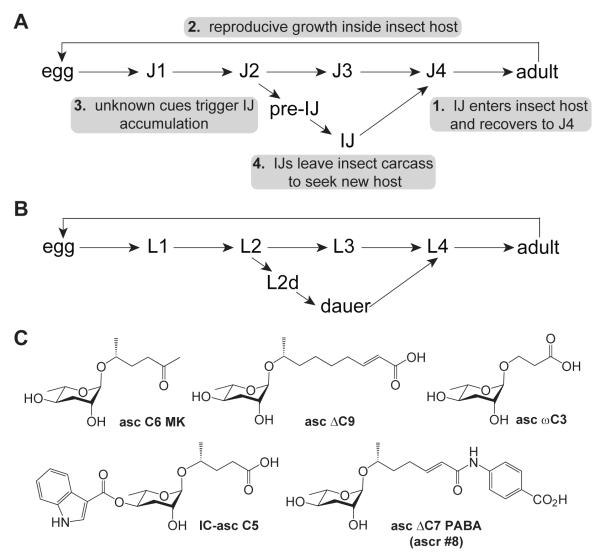Figure 1.
The life cycles of H. bacteriophora and C. elegans. (A) Inside an insect, H. bacteriophora undergoes reproductive growth, progressing through four larval stages (J1–J4) to the adult stage. IJs form in large numbers via endotokia matricida and break out of the insect carcass to find a new host. (B) During reproductive growth, C. elegans progresses through four larval stages (L1–L4) to the adult stage. High population density (i.e., dauer pheromone ascarosides) promotes dauer development. (C) C. elegans dauer pheromone ascarosides. More descriptive names have been provided than in the original publications of these molecules: asc C6 MK (methylketone) (originally called asc C612, 17), asc μC9 (originally called asc C912, 17), asc ωC3 (originally called asc C313, 18), IC (indolecarboxyl)-asc C514, and asc μC7 PABA (para-aminobenzoic acid) (also called ascr #815).

